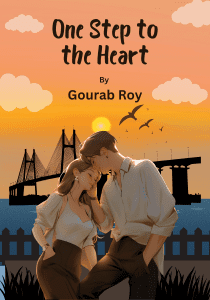Johann Wolfgang von Goethe’s Faust is one of the most significant works in German literature and a cornerstone of Western literary canon. Its exploration of profound themes such as ambition, desire, and the quest for knowledge has captivated readers and scholars for over two centuries. The play, divided into two parts, presents a rich tapestry of philosophical inquiry and human experience, inviting readers to engage deeply with its characters, themes, and the moral dilemmas they embody. In this article, we will delve into a comprehensive summary and analysis of Faust, along with character studies and an exploration of its central themes.
Summary and Analysis
Part One: The Pact
Faust begins with a prologue in heaven, where God and Mephistopheles (the devil) make a wager about Faust’s soul. Faust, a learned man, is disillusioned with the limitations of human knowledge and is seeking deeper meaning in life. In his quest, he turns to magic and makes a pact with Mephistopheles, agreeing to surrender his soul in exchange for unlimited knowledge and worldly pleasures. This Faustian bargain serves as the crux of the play, illustrating the dangerous allure of unchecked ambition and desire.
As Faust embarks on his journey, he encounters Gretchen, a young woman who becomes the object of his desire. Their relationship evolves from innocent affection to tragic consequence. Faust seduces Gretchen, leading her to moral ruin, culminating in her descent into madness and the murder of her child. This tragic arc not only highlights the consequences of Faust’s ambition but also serves as a critique of the societal norms regarding women and morality in Goethe’s time.
Part Two: The Quest for Meaning
In Part Two, the narrative shifts dramatically as Faust’s journey expands beyond personal gain to encompass broader themes of creativity, politics, and art. Faust becomes involved in various historical and mythical contexts, engaging with figures such as Helena, a symbol of ideal beauty and classical knowledge, and the Emperor, representing political ambition and corruption.
Goethe uses these encounters to explore the idea of striving toward greatness and the human condition’s complexities. Faust’s attempts to create a utopian society illustrate his relentless quest for meaning beyond the individual. However, each of his pursuits ends in disillusionment, reinforcing the idea that true fulfillment may remain eternally elusive.
Character Analysis
Faust
Faust is the quintessential tragic hero, embodying the tension between human aspiration and the limits of knowledge. His insatiable thirst for understanding drives him to make the fateful pact with Mephistopheles. Faust’s character arc reflects a profound existential struggle; he is both a seeker of truth and a source of destruction. His relationship with Gretchen reveals his moral ambiguity and the consequences of his desires, as he grapples with guilt and responsibility.
As the narrative progresses, Faust evolves from a man seeking personal pleasure to one yearning for a greater purpose. This evolution underscores the complexity of his character and highlights the broader human condition’s quest for meaning.
Mephistopheles
Mephistopheles, the cunning and manipulative devil, serves as both antagonist and a catalyst for Faust’s transformation. He embodies the darker aspects of ambition, temptation, and despair. Unlike traditional portrayals of the devil, Goethe’s Mephistopheles is a multifaceted character, often displaying wit, charm, and intelligence. His cynical worldview and sharp commentary on human nature provide a counterpoint to Faust’s idealism.
Mephistopheles revels in chaos and destruction, using Faust’s desires against him. His character raises questions about free will and moral responsibility, as he entices Faust to make choices that ultimately lead to his downfall. The dynamic between Faust and Mephistopheles highlights the internal struggle between good and evil within humanity.
Gretchen
Gretchen, or Margarete, represents the tragic consequences of Faust’s ambitions. Initially portrayed as innocent and pure, her character arc is a poignant commentary on societal expectations and the vulnerability of women. Gretchen’s descent into madness serves as a powerful critique of the patriarchal structures that condemn her for her relationship with Faust.
Her character exemplifies the theme of moral corruption and the destructive nature of unchecked desire. As her life unravels, Gretchen becomes a symbol of lost potential and the tragic cost of ambition. Goethe’s treatment of Gretchen emphasizes the interplay between individual agency and societal pressures, inviting readers to reflect on the broader implications of her fate.
Helena
Helena, introduced in Part Two, embodies idealized beauty and the pursuit of artistic perfection. She serves as a contrast to Gretchen, representing the allure of unattainable ideals. Helena’s character reflects Faust’s evolving understanding of desire; she symbolizes the pursuit of a higher aesthetic and intellectual fulfillment.
However, Helena’s presence also highlights the fleeting nature of beauty and the ultimate futility of striving for perfection. Faust’s relationship with Helena underscores the idea that true fulfillment cannot be found in external ideals but must come from within.
Themes
The Duality of Knowledge
At the heart of Faust lies the theme of knowledge and its dual nature. Faust’s relentless pursuit of understanding embodies the Enlightenment’s ideals, yet it also reveals the dangers of overreaching. The play raises questions about the moral implications of knowledge and the responsibilities that accompany it. Faust’s pact with Mephistopheles serves as a cautionary tale about the consequences of seeking knowledge without regard for ethical considerations.
Ambition and Desire
The theme of ambition permeates the narrative, driving both Faust and Mephistopheles. Faust’s insatiable desire for knowledge and experience reflects humanity’s inherent longing for meaning and purpose. However, this ambition often leads to destructive outcomes, as seen in Faust’s relationship with Gretchen and the havoc wrought by Mephistopheles. The play invites readers to reflect on the nature of desire and the fine line between aspiration and moral decay.
The Search for Redemption
Throughout the play, the quest for redemption emerges as a central theme. Faust’s journey is one of self-discovery and the longing for forgiveness. Despite the darkness of his choices, there remains a glimmer of hope for redemption. The ending of Faust suggests that true salvation lies not in the pursuit of worldly pleasures but in the recognition of one’s limitations and the acceptance of human imperfection.
The Nature of Good and Evil
Goethe’s exploration of good and evil challenges traditional moral dichotomies. Mephistopheles, while representing evil, often reveals profound truths about human nature. The play suggests that good and evil exist on a spectrum, and the choices individuals make define their moral character. This complexity invites readers to consider the nuances of morality and the factors that influence human behavior.
The Role of Women
The representation of women in Faust is particularly significant. Through the characters of Gretchen and Helena, Goethe examines the societal constraints placed on women and the consequences of their victimization. Gretchen’s tragic fate serves as a critique of the moral judgments imposed by society, while Helena embodies the unattainable ideals imposed on women. The interplay between these characters raises questions about gender, power, and agency, challenging readers to reconsider traditional notions of femininity.
Conclusion
Goethe’s Faust remains a timeless exploration of the human condition, delving into the complexities of ambition, desire, and the search for meaning. Through its rich characterizations and profound themes, the play invites readers to reflect on the eternal struggle between good and evil, the duality of knowledge, and the quest for redemption. As we navigate the challenges of modern existence, Faust serves as a poignant reminder of the moral dilemmas we face and the enduring quest for understanding in an often chaotic world.
In the end, Faust is not merely a tale of a man who sold his soul; it is a profound meditation on the nature of existence, the consequences of our choices, and the eternal pursuit of meaning that defines our humanity. As we engage with Goethe’s masterpiece, we are left to ponder the ultimate question: what price are we willing to pay for knowledge, experience, and the fleeting pleasures of life?




